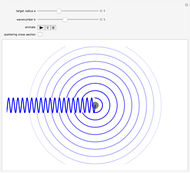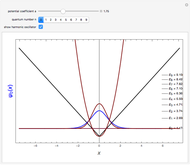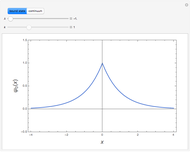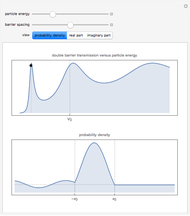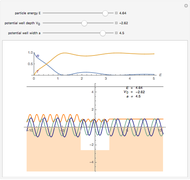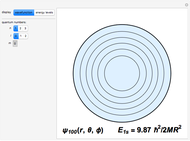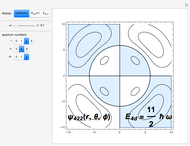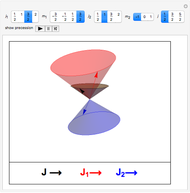Scattering by a Symmetrical Eckart Potential

Requires a Wolfram Notebook System
Interact on desktop, mobile and cloud with the free Wolfram Player or other Wolfram Language products.
The Schrödinger equation for scattering of a monoenergetic beam of particles of mass  from a symmetric Eckart potential can be written
from a symmetric Eckart potential can be written  , where
, where  is the potential height,
is the potential height,  is a measure of its width, and
is a measure of its width, and  is the particle momentum. The equation can be solved exactly in terms of Gauss hypergeometric functions, with details given in the cited reference. In contrast to a classical scattering problem, particles have a finite probability of penetrating the barrier even if their kinetic energy is less than the barrier height—this is an instance of the quantum-mechanical tunnel effect. For an incident beam of unit intensity
is the particle momentum. The equation can be solved exactly in terms of Gauss hypergeometric functions, with details given in the cited reference. In contrast to a classical scattering problem, particles have a finite probability of penetrating the barrier even if their kinetic energy is less than the barrier height—this is an instance of the quantum-mechanical tunnel effect. For an incident beam of unit intensity  , the transmitted and reflected beams have intensities
, the transmitted and reflected beams have intensities  and
and  , respectively. The tunneling probability decreases with increasing barrier height and width and drops precipitously for more massive incident particles. Tunneling increases with particle energy, however. Another feature that contrasts with classical behavior is the partial reflection of the wave, even for kinetic energies greater than the barrier height (
, respectively. The tunneling probability decreases with increasing barrier height and width and drops precipitously for more massive incident particles. Tunneling increases with particle energy, however. Another feature that contrasts with classical behavior is the partial reflection of the wave, even for kinetic energies greater than the barrier height ( ).
).
Contributed by: S. M. Blinder (March 2011)
Open content licensed under CC BY-NC-SA
Snapshots
Details
Snapshot 1: decrease of transmission probability with increasing barrier width
Snapshot 2: decrease with increasing mass
Snapshot 3: partial reflection for 
Reference: D. ter Haar, Problems in Quantum Mechanics, London: Pion Ltd., 1975, pp. 11–12, 139–141. There is a misprint in equation (1), where the argument of the second hypergeometric function should read  .
.
Permanent Citation









